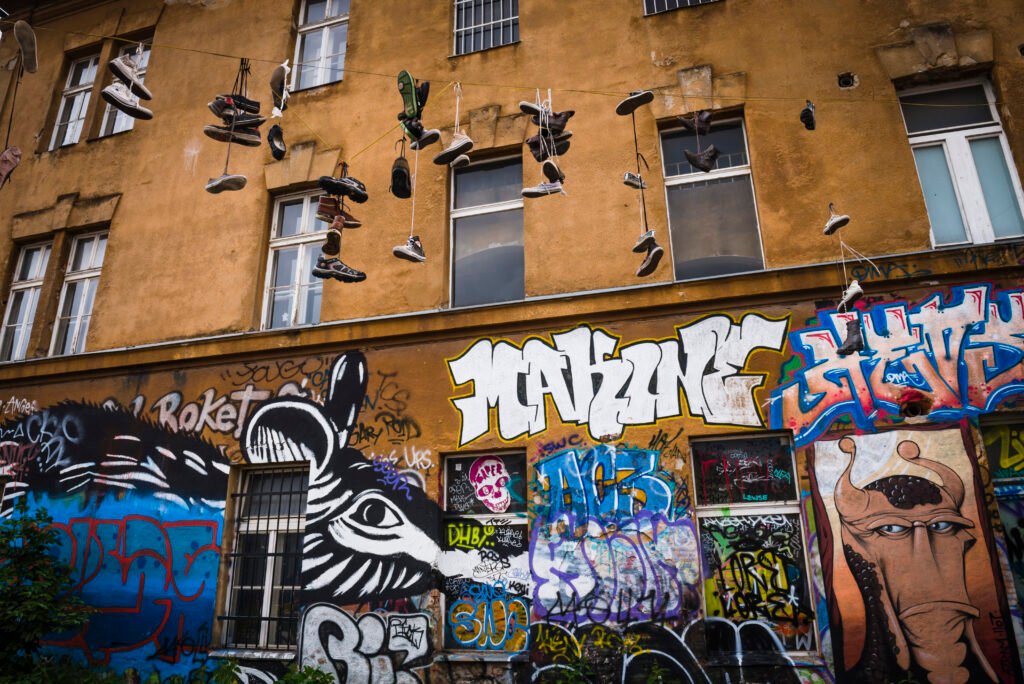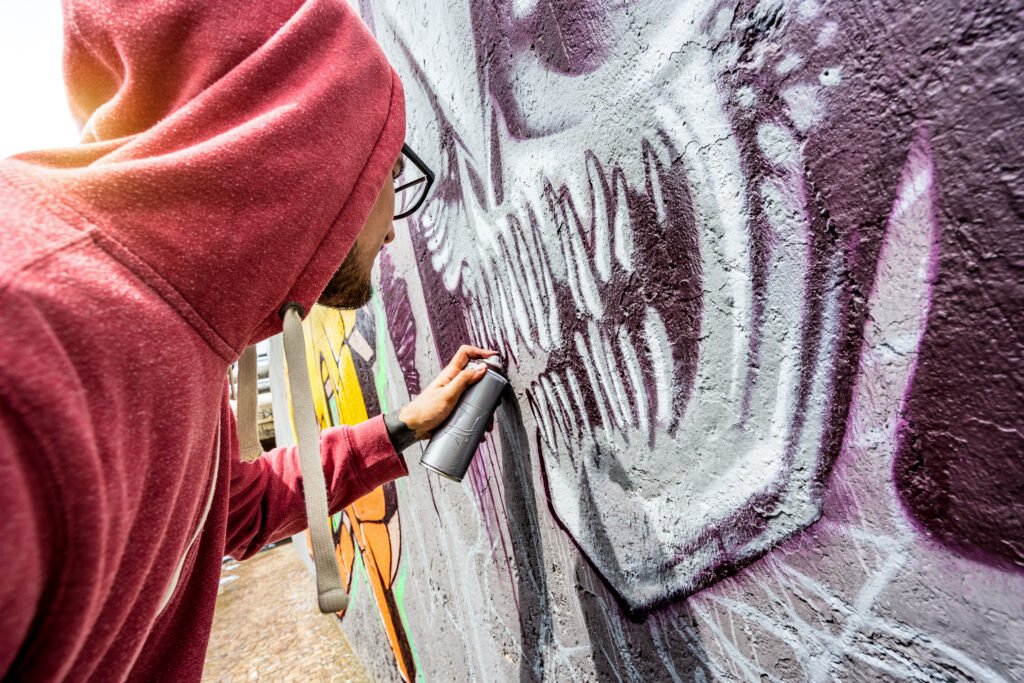The city pulses like a living, ever-changing artwork. Walls, viaducts, and façades become visual expressions that defy the boundaries of traditional art. Within this landscape, urban art emerges as both an aesthetic and political language, challenging the divide between the institutional and the popular, the ephemeral and the lasting. Through graffiti, stencils, and interventions, the urban environment transforms into the open gallery of the 21st century.
More than just wall decoration, urban art questions, denounces, celebrates, and narrates. It draws from daily life and speaks directly to the public, with no need for institutional mediation. At this intersection of art and street, one of the most authentic expressions of contemporary life is born: the urban space as both canvas and witness.
Graffiti: The Visual Language of the Streets
Graffiti is one of the most visible and impactful forms of urban art. Born from 1970s counterculture in New York, it exploded across major cities worldwide. In São Paulo, regarded as a global graffiti capital, artists like OsGemeos, Nina Pandolfo, and Eduardo Kobra gained international acclaim by blending local identity, social critique, and refined aesthetics.
According to Graffiti Brasil (Manco, Neelon, Lost Art, 2005), Brazilian graffiti has a unique visual character shaped by cultural hybridity and life on the margins. Murals like Kobra’s Etnias, created for the Rio Olympics, became global landmarks — it is one of the world’s largest street artworks.
Despite its artistic merit, graffiti is often misunderstood. Unlike tagging or vandalism, graffiti carries intention and maintains a conscious relationship with public space. It’s art for everyone — democratic and accessible.
The City as an Open-Air Gallery
Urban space becomes a permanent exhibition when art escapes conventional frames. Walls become canvases, staircases installations, sidewalks interventions. Urban art breaks from museum logic and redefines the relationship between artwork and viewer: direct, immersive, and daily.

This shift is discussed by Nicolas Bourriaud in Relational Aesthetics (1998), where he highlights art practices centered on interaction over passive contemplation. Urban art, by its very nature, is relational. It disrupts routine, surprises passersby, and demands presence.
Traditional institutions now embrace this genre. The Museum of the City of New York, MOCA (Los Angeles), and Brazil’s Museu de Arte do Rio have held major exhibitions focused on graffiti and street art. In 2011, Art in the Streets marked the first retrospective of the genre in a major U.S. museum.
In Brazil, São Paulo’s Beco do Batman is a world-renowned hub. Constantly evolving, it has become a hotspot of urban art, tourism, and cultural resistance — where the city itself becomes the artistic protagonist.
Urban art: Resistance, Memory, and Identity
Urban art is also a tool of resistance. In contexts of repression and social inequality, it gives voice to collective struggles. Many murals address urgent themes such as racism, police violence, inequality, and ancestry. The street becomes a manifesto. As Teresa Caldeira states in City of Walls (2000), graffiti is a “symbolic reappropriation of urban space” by marginalized youth.
Beyond resistance, urban art also celebrates. It honors historical figures, revives forgotten memories, and affirms cultural identity. Murals of Marielle Franco, Angela Davis, and Martin Luther King Jr. across global cities show how this language can inspire transformation.
Social media has amplified the impact of urban art. Instagram accounts like @globalstreetart connect artists and fans worldwide, creating a dynamic visual archive that crosses borders.
Urban Art: A Movement in Constant Motion
The city is a living organism, always in flux. Urban art evolves with it, adapting, reacting, and reinventing itself. Its power lies in its ephemerality and its ability to engage the present moment. It does not ask permission, yet it assumes responsibility. It invites the gaze, provokes thought, and turns everyday life into aesthetic discourse.
Graffiti and its offshoots will continue to color the cityscape with urgent, poetic narratives. Urban art is more than a visual expression — it is a declaration that every city is also a creative, political, and collective space.



